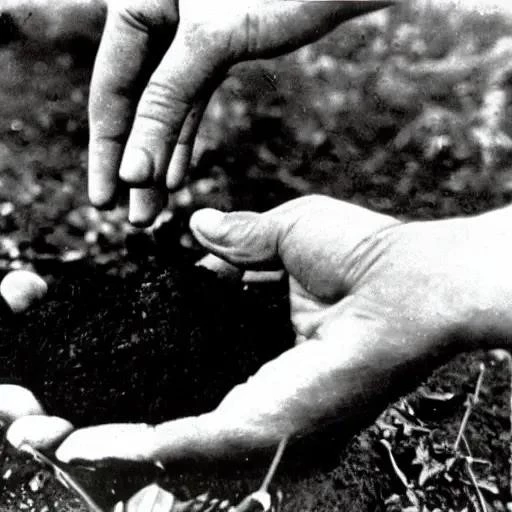
The modern gardener faces a delightful yet daunting paradox: an unprecedented abundance of knowledge at their fingertips. From intricate soil science to the latest organic pest control methods‚ the internet brims with advice. Yet‚ sifting through endless blogs‚ forums‚ and social media feeds can feel less like cultivating a vibrant garden and more like navigating an impenetrable digital jungle. This information overload‚ while rich in potential‚ often leaves enthusiasts overwhelmed‚ struggling to extract timely‚ relevant insights that truly foster their green aspirations. But what if there was a remarkably simple‚ incredibly effective tool to cut through the digital noise‚ delivering precisely the wisdom your garden craves‚ exactly when it needs it?
Imagine a personalized stream‚ meticulously curated to your specific horticultural interests – be it nurturing exotic orchids‚ mastering companion planting‚ or achieving that perfect rose bloom. This isn’t a futuristic fantasy‚ but an accessible reality‚ powered by a technology many overlook: the RSS feed. Long a staple for news junkies and digital pros‚ the Really Simple Syndication (RSS) feed is quietly transforming how discerning gardeners access their essential tips. By aggregating content from your favorite sources into one streamlined interface‚ it frees you from the endless scrolling‚ allowing you to spend more precious time with your hands in the soil‚ rather than glued to a screen.
Key Benefits & Getting Started with Gardening RSS Feeds
| Category | Description/Details |
|---|---|
| What is an RSS Feed? | Really Simple Syndication (RSS) is a web feed that allows users and applications to access updates to websites in a standardized‚ computer-readable format. It’s like a personalized news ticker for your favorite content‚ pulling headlines and summaries directly to you. |
| Core Benefit 1: Time Efficiency | Consolidates updates from multiple gardening blogs‚ forums‚ and news sites into one central reader‚ eliminating the need to visit each site individually. This dramatically saves hours of browsing time. |
| Core Benefit 2: Personalized Content | You choose precisely which sources to follow‚ ensuring the content is always relevant to your specific gardening interests‚ local climate‚ and the particular plant types you cultivate. No more irrelevant articles! |
| Core Benefit 3: Never Miss an Update | Get instant notifications for new articles‚ crucial seasonal tips‚ urgent pest alerts‚ or innovative techniques from your most trusted sources. This is absolutely crucial for making timely and effective gardening decisions. |
| How to Get Started (Overview) |
|
| Example Official Resource | Feedly Blog: What is RSS? (While not gardening-specific‚ this resource provides an excellent primer on RSS technology and how to use a popular reader like Feedly.) |
The strategic advantage of an RSS feed for gardening extends far beyond mere convenience. Consider the professional horticulturist‚ constantly needing to stay abreast of scientific advancements‚ new cultivar releases‚ or emerging disease threats. They don’t have time for aimless browsing. By integrating insights from university extension programs‚ leading botanical gardens‚ and specialized horticultural journals – all delivered via RSS – these experts maintain a sharp‚ competitive edge. For the home gardener‚ this translates into a powerful personal learning engine. “It’s like having a team of dedicated research assistants‚” observes Dr. Eliza Thornton‚ a renowned horticultural consultant‚ “sifting through the digital deluge to bring you precisely what matters for your specific climate and plant palette. This focused delivery minimizes distractions and maximizes actionable knowledge‚ truly empowering gardeners to make informed‚ proactive decisions.” This method drastically reduces the risk of missing a crucial seasonal tip or an innovative technique that could transform your yield.
Embracing this digital streamlining is surprisingly straightforward. Numerous intuitive RSS readers‚ both web-based and app-driven‚ offer elegant interfaces for managing your feeds. Imagine waking up to a personalized digest of new articles on drought-resistant perennials‚ organic pest solutions for tomatoes‚ or the optimal time to prune your fruit trees – all without encountering irrelevant advertisements or algorithmically driven detours. This future-forward approach to gardening isn’t about replacing the tactile joy of dirt under your fingernails; rather‚ it enhances it. It ensures that every moment spent tending your plants is backed by the freshest‚ most pertinent information‚ fostering not just growth in your garden‚ but growth in your own gardening wisdom. The era of informed‚ efficient‚ and ultimately more successful gardening is here‚ waiting to be cultivated.
In a world overflowing with data‚ the ability to filter‚ focus‚ and absorb knowledge efficiently is paramount. For the passionate gardener‚ the often-underestimated gardening tips RSS feed represents more than just a technological convenience; it’s a strategic imperative. It promises a future where every gardener‚ from novice to seasoned expert‚ can effortlessly access the insights needed to transform their patch of earth into a flourishing sanctuary. By adopting this smart‚ streamlined approach‚ you’re not just growing plants; you’re cultivating a richer‚ more rewarding gardening experience‚ one perfectly timed tip at a time. The seeds of digital wisdom are sown; now‚ let them grow your garden to its fullest potential.
